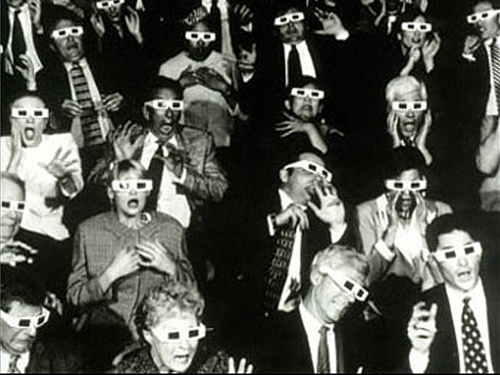New media and photography theory – Week 6 2013
Week six consisted of critiquing the common-sense approach to the audience. The audience is defined by Long and Wall as “an anonymous and variable collective of individuals addressed (as a group of individuals) by the organs of ‘mass’ media communication” (Long and Wall 2012:488). This week moved beyond the original ideas of audience and into the ideas of the audience being a product of the media (Long and Wall 2012:275).
A realisation that became apparent during the lecture was that without the audience, there would be no media and without the media there would be no profit. The more there is of media, in a variety of outlets and forms, the more competition. This adds pressure to the producers to attract more audiences using a variety of methods to continue to make the profit that they need.
Long describes how we are not always aware of being part of an audience, no matter how many millions of consumers are also sharing the same experience at the same time. (Long and Wall, 2012:279) Whilst Mattelart describes it from the perspective of producers “each media institution has its own specific way of positioning the viewer, regulating certain aspects of the production of meaning and production of emotional responses, and so forth”.(Mattelart, A 1992:82) Audience unawareness and power or manipulation by the producer implies in this case the vulnerability and passivity of consumers. I wonder how many people notice the ‘how are you feeling today John?’ question that appears in the box before you write a status on Facebook. Again this first person text positions its audience into feeling unique and influences them in some cases to carry out the producer’s desired response of a status and therefore, more time spent on Facebook.
That however, is not comparable to the possible media effects and influence from propaganda. It is an active manipulation of ideas, information and aims to inject its desired effects into its audience by restricting and misinforming them of other options. (Long and Wall 2012:286) Mattelart discusses the role of active minorities in manipulation of inert societies and discusses The Frankfurt School in their belief in the omnipotence of the mass media (Mattelart, A 1992:73). Nazi Germany used it to achieve large influence in world war two. However, the same concepts –if not slightly subtler- are still being used today in the likes of President Obama’s political campaign.
My two readings have altered my view on possible media power. I want to research further into modern day examples of moral panics created by new media. Fast paced and immediacy of the new media industry can create news before it has even been officially reported by the press and therefore the effects on the audience can be elevated.
References:
Long, P and Wall, T (2012) Media Studies: Texts, Production, Context (2nd Edition), London:Pearson.
Mattelart, A and Mattelart, M. (1992). New paradigms: The procedures of consumption. In: Translation by Cohen, J and Urquidi, M. Series editor: Bolton, R Rethinking media theory: Signposts and new directions. 2nd ed. Minneapolis: University of Minnesota Press. p72-86.
